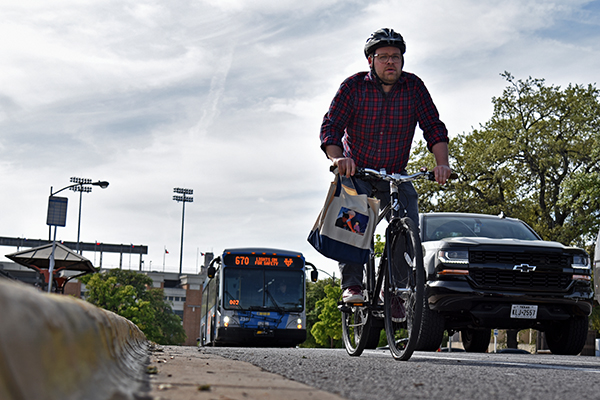Austin releases new urban trail plan to promote equitable accessibility
February 10, 2023
The Austin Transportation Department and Public Works departments released three new draft plans for an urban trail and other accessible alternative transportation routes as part of their ATX Walk Bike Roll on Jan. 27.
As part of multiple mobility projects from the city, the drafts are separated into three plans: sidewalks, crossing and shared streets, urban trails and a bicycle draft plan. According to a Jan. 27 press release, once each of the plans are finalized, the Austin Strategic Mobility Plan will be amended to reflect the drafts. The revised draft will be presented to the city council after it passes review by the Planning Commision in April.
Nathan Wilkes, an engineer and designer at the transportation department, said prior to the pandemic, the city was focusing on easing car congestion by adding painted bike lanes to certain roads and making other modes of public transportation available.
“Painted bicycle lanes are the norm — that’s not anywhere close to good enough from a personal safety perspective,” Wilkes said. “We switched into physical protection on busy streets, trails, quiet streets that link together (and) connect across busy streets.”
Amaury Jayr, an electrical and computer engineering freshman, said he is excited to explore the new trails. Jayr said he wants to compete in a triathlon, so he often goes for runs and uses the current bike trails to train.
“I try doing a very long run at least once a week, especially during the weekends when I have more time,” Jayr said.
However, Jayr said getting to the bike trails can be dangerous without the use of a car or bus, citing a lack of bike lanes further from campus. With the new plans, he is excited about exploring the new trails with his friends.
“I’d explore them,” Jayr said. “It’s a lot of fun.”
Now, Austin is focusing on transportation solutions that address issues of displacement, accessibility and safety, Wilkes said. During the drafting process, planners used community ambassadors to advocate for lower income and communities of color. The goal was to create routes in areas where walking and biking paths are less accessible.
“We looked a lot deeper in areas that we identified as being underinvested,” Wilkes said. “Providing equitable access like access to mode choice is a kind of huge challenge, and that’s kind of what’s front and center in what the bicycle plan draft talks about.”
Katie Wettick, Urban Trails Program Manager at Austin Public Works, said consultants looked over past transportation plans and census data, tracking areas with high or medium-high vulnerability to displacement and affordability concerns.
“We’re here to talk to them about a sidewalk or a bike lane or an urban trail in their neighborhood,” she said. “But how can they really engage around that when they’re afraid they’re not going to be able to afford to live in their neighborhood next year and the next five years by the time that infrastructure is built?”
By providing more accessible methods of mobility, Wettick hopes to bring new residents to the trails and connect those residents to the places they need to go.
“It really comes down to making sure people have safe places to walk, bike and roll and also destinations to walk, bike and roll to,” Wettick said. “That comes down to land use patterns and affordability.”












